You will definitely love traveling with RVs if you're an adventurous family!
You can get away, explore new places, fully relax and enjoy the outdoors within your cozy little world.
But, what happens when your children are on the road? Do they use car seats? Are their car seats safe?
Do you properly use and install them? Wow, a lot of questions!
So, to get the correct answers, stick to our guide, and find all the exciting parts to keep your little ones safe in RVs.
More...
What Is an RV & What Are the Types?
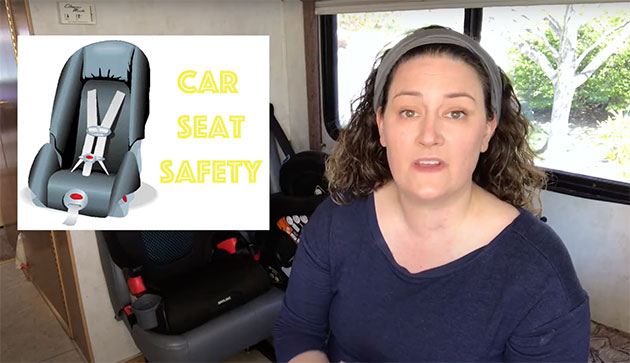
Source: Youtube.com
An RV stands for a Recreational Vehicle.
It's a motor vehicle or a trailer, including living quarters created for proper accommodation. But, it comes in various sizes and shapes.
Thus, you can find three classes of the recreational vehicle: class A, class B, and class C.
Class A (the biggest guys) refers to the most extensive and bus-like recreational vehicle models.
They are the bulkiest models, often weighing between 15 and 30 000 pounds. They are 21-45 feet long.
Yet they have expandable living quarters once parked. But, what's the heck?
Some claim that bigger vehicles tend to withstand external forces better in car crashes.
Well, there isn't actually a rear tenant crash testing demanding the class A recreational vehicles.
So, I suggest you still choose the crash-tested, verified vehicles regardless of their size and weight.
In addition, the Recreational Vehicle Consumer Group claims that they may have some structural issues, not sustaining accidents at 20 mph without severe harm.
And, yet, they're the most expensive models, accommodating 1-8 persons.
Class B (the most petite boys) refers to miniature recreational vehicles.
You can often find alternative names, such as conversion vans, campervans, etc., and they're easier to operate than class A.
Of course, their price, flexibility, and versatility match the overall quality for the given price point, but sometimes they might lack toilets or other rooms.
Class B is invented only for getaway weekends, suitable for 1-4 persons, and typically weighs 6000-8000 pounds. Also, they are 17-19 feet long.
Class C (middle-sized guys) stands for a 10-12 000 pounds motor vehicle, 20-31 feet long.
In other words, it's a smaller version of Class A, with a sleeping unit in the back and the one above the cabin.
Similar to Class A, it offers extendable living space once it's parked. And, it's perfect both for a quick escape & longer distances, suitable for 1-8 people.
So, what's the big deal?
Well, the big deal comes if you don't follow the rules and don't restrain your child correctly in the child seat, so they don't fulfill the same safety standards as you in the vehicle.
Thus, you will be in a huge problem. However...
RV Seat Belt Laws
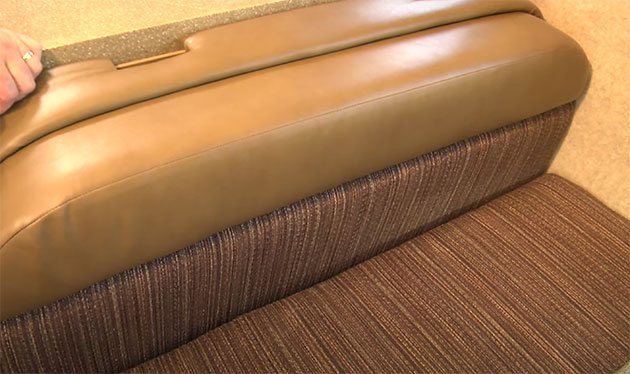
Source: YouTube
As you can see, recreational vehicles also follow the rules, and there are specific car seat laws for RV travel.
These include the Federal Vehicle Motor Safety Standard 208.
Both Class B and Class C meet and exceed the FMVSS 208 rules, but the safety features may vary.
Thus, you can find:
- Type 1 seat belts (a lap-only belt, not safe for children)
- Type 2 seat belts (lap and shoulder belts, safe for children in all forward-facing seating positions
But, the Federal Seat Belt Standards may vary from state to state, as the RV seat belt laws and car seat laws are not the same.
Thus, in 22 US states, the Federal Seat Belt Standards require all passengers to wear seat belts. Other 26 states have different seat belt demands depending on the child's age.
So, it would be best if you examined the law before you travel across the country.
However, the experts all agree you must correctly restrain yourself and your child in a seat belt and proper child restraints in the forward-facing vehicle seat, with a crash-tested seat belt system.
In addition, the Child Passenger Safety laws also require the correct use of child restraints.
The car seats must be adequately installed, following the manufacturer's instructions on the forward-facing vehicle seat. You must anchor the seat belt system accurately.
Otherwise, you may not legally be able to transport your child, and you're breaking the Child Passenger Safety law.
So, how to travel safely with children?
Keeping Children Safe in RVs
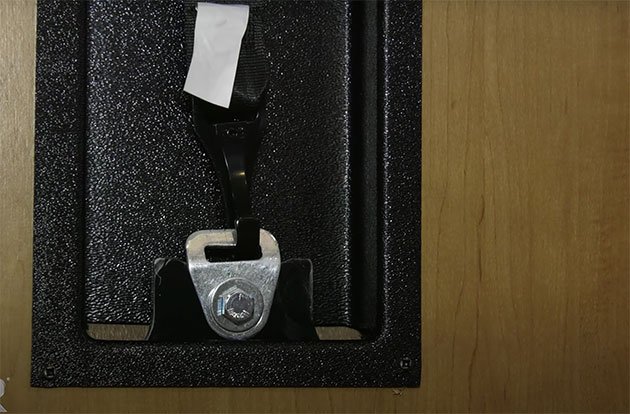
Source: YouTube
You need to know that although the laws allow children to ride in the RVs, safety experts do not recommend it as your first option.
So, what can you do?
Firstly, you have to make sure your children ride safely in the car seats. You have to drive a car instead of using a tow vehicle to do so.
Thus, your kiddos will be in the proper car seats in the vehicle, instead of the RV.
If you still opt for a tow vehicle, make sure it's a towable RV (travel trailer, fifth wheel, or a truck camper). The child can be correctly seated in the child restraint system in the tow vehicle.
However, the key figure is the driver - they must have experience towing travel trailers and transporting children.
However, you need to be aware of the danger when towing a travel trailer.
Fifth wheels are tricky, requiring heavy-duty tucks to attach to the truck's back. In addition, their parking and maneuvering might be a real pain in the neck, as they're too spacious.
Other travel trailers cover pop-up campers, hard-walled trailers, compact trailers, and other models with various lengths, sizes, and shapes.
So, pay attention to the proper anchoring, and always check if the attachment is vital and how solid they are. Otherwise, you can have a severe accident on the road.
Additionally, examine if the RV's cab has enough space & seating positions for installing car seats properly.
Beware that the smaller classes - B & C have similar standards as the passenger vehicles for the front.
Therefore, their truck chassis or van chassis must meet these standards for correct car seat installation.
If you have to install a car seat in the captain's chair, the seat belt must meet the safety benefits.
But, you cannot mix these parts; the manufacturer must order them. And the car seat must be forward-facing to install it adequately.
Kids shouldn't ride in the front seat; in the RV, it may be the only child restraint system with a proper seat belt.
And ensure all passengers are appropriately restrained.
What About the Safety Risks?
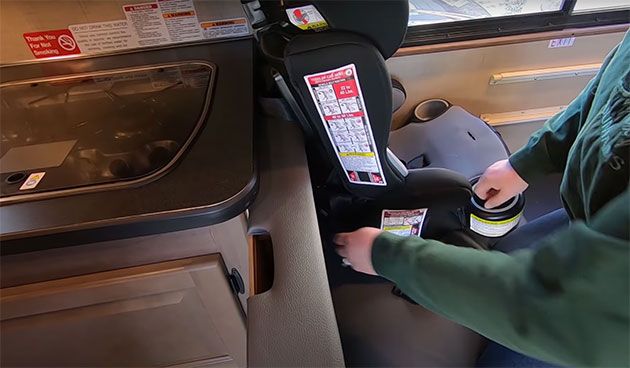
Source: YouTube
According to Amy Fries, a CHOC health educator, you need to avoid different dangerous scenarios while in the RVs. These include:
- Lack of seat belts - The only federally approved seat belt systems are placed in the driver and passenger seats in most recreational vehicles.
Adults and children should not sit in the side or rear-facing seat when the car is in motion.
- Projectiles - different objects and tools can be dangerous when the RV is in motion. You can trip, fall, or be launched, so put all potentially dangerous things away.
- Distracted drivers - RVs and all other larger vehicles focus more on the road to avoid accidents and fatal outcomes.
- Car seats & setup - car seats and booster seats are the only two car seat types allowed for forward-facing seats in vehicles with federally approved LATCH or seat belts.
It would be best if you didn't place them in the side or rear-facing vehicle seat when the car moves.
So, How to Avoid Danger?
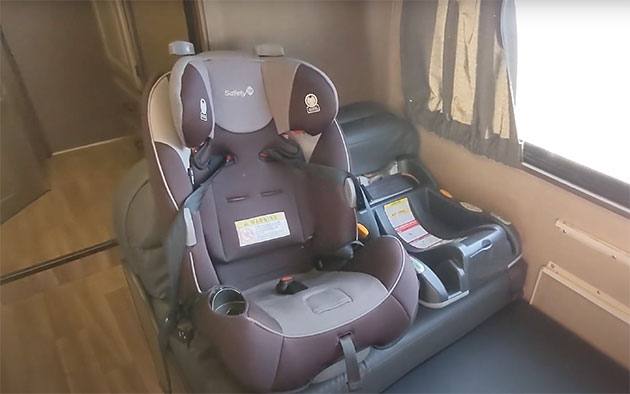
Source: Youtube
Amy states:
1. It would be best to choose only RVs with type 2 seat belts that meet Federal Seat Belt requirements (208).
Children of eight and older can use a seat belt if the lap belt covers the upper thighs and the shoulder belt covers the chest and shoulder.
If the kids are not tall enough, they must be placed in the correct car seats or booster car seats.
2. Driving a second vehicle - without safe seating positions and properly anchored seat belts in the RVs, it's best to use another passenger car.
All children younger than eight must be placed in the rear-facing car seat, forward-facing car seat, or a booster seat in the back vehicle's seat of the passenger vehicle.
3. Towing the RV behind the primary passenger vehicle - everyone rides together, with the federally approved seat belt systems, correctly seated and positioned.
Extra Tips for Additional Safety
a. Do not sit on the rear-facing bench seats if the RV is moving, as the Dr. Hofmann of the AAP states.
Only booster seats and car seats are correct for the forward-facing seats, with lower anchors and seat belts.
b. Don't forget the laws of physics - if the vehicle is moving 50mph, everything is moving at the same speed.
So, if you're not restrained, you'll act as a rocket (and everything else in the vehicle.)
Proper Car Seats & Installation
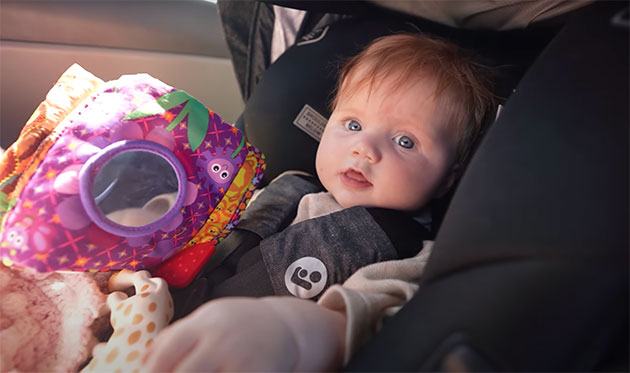
Source: YouTube
If you travel with more than one child, check the car seat manual and what the vehicle manufacturer recommends. The proper installation will depend on it.
For rear-facing infant seats, it would be best to travel by the second car and install it in the back seat of the vehicle, in the center position, if possible.
This way, your kids will have maximum safety benefits, and you don't have to place it in the passenger seat and turn off the airbags.
However, you can install it in the front seat next to the driver's seat when you have only an RV. But, again, don't do it if not necessary!
The same goes for other car and booster seats, but the rules are different for them.
If your children need car seats or boosters, you need forward-facing car seats. Rear-facing seats and side seats will not work.
The seat belts will be in the forward-facing dinette seat or a sofa, but these are rear-facing and side-facing.
But, if the child doesn't meet the standards for a booster, you will need a forward-facing car seat or a rear-facing one for infants.
The forward-facing seat must be installed with the three-point seat belts with a top tether anchor point or a LATCH system.
For a LATCH system, the lower anchors are at the point where the seat cushions meet. But, it would be best if you didn't forget a top tether anchor.
And, the tether anchors are on the back seat's panel, on the floor, ceiling, or behind the car seat.
For the booster car seat, you only need a three-point seat belt.
However, if RVs only have structurally sound lap-only belts, you can use an alternative - the RideSafer Travel Vest.
Structurally sound means the seat belt is attached to the metal frame of the RV; it has suitable tether anchor strength and 6000 pounds system strength.
The RideSafer Travel Vest serves as a substitute for both a booster car seat and a forward-facing seat.
They must be federally approved concerning the seat belts to meet the crash standards.
Secondly, they must be appropriately attached to the metal frame of the vehicle, not the wooden parts.
Also, ensure the seat belts lock. If they don't meet the standards, they cannot protect your child from the booster.
The Travel Vest also won't work with the only lap belts or shoulder belts that are not strong enough; it works only with the structurally sound shoulder and lap belts.
Finally, putting car seats in the front passenger seat might be the best option if you don't have any other way out.
But, if you opt for the second car, keep them all - rear seats, forward-facing, and boosters in the back seat.
The front passenger seat is dangerous, especially with the airbags, so the back is the safest option.
Also, if you ride in the RV, don't place the seats on the rear-facing bench in the RV.
FAQs
1. Do you need a car seat in an RV?
Yes, you do. Depending on your child's age and development, you will need rear-facing, forward-facing, and booster seats.
2. How do you travel with a toddler in an RV?
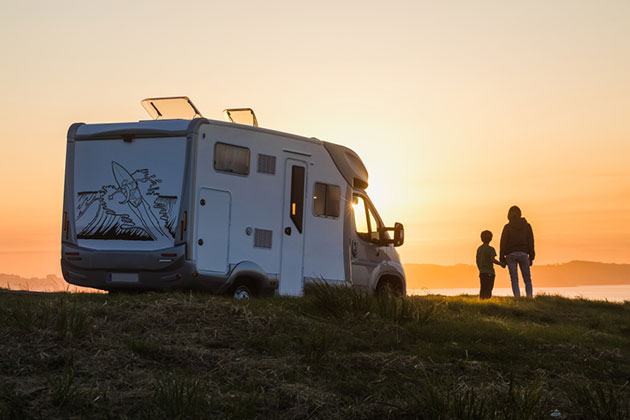
You will follow the safety tips (listed above) and use the appropriate forward-facing child restraint system to accommodate your child appropriately.
Also, you can find a crib suitable for the RV's interior, or the cabin, in most cases, will be enough to accommodate your infant or toddler inside.
3. How do you install an infant car seat in an RV?
The best scenario is that you don't install it at all.
In other words, it would be best to travel with another vehicle and place the infant car seat in the back seat.
Otherwise, you will have to turn off the airbags and place the infant seat in the passenger seat in the RV, which is not recommendable by experts.
4. Are seatbelts required in an RV?
Yes, they are! You must always select type 2 belts - both shoulder and lap belts instead of only a lap belt option - type 1.
But, the belts must be correctly installed and used and meet the Federal RV seat belt laws.
It would be best if they were crash-tested to ensure they could survive the accidents.
5. Can you live in an RV with a toddler?
Yes, you can. It is legal to live in an RV with a child, and there are no laws forbidding it.
Final Thoughts
So, will you travel long distances with your child in the RV?
If you do, please, stick to the safety procedure, install proper car seats, and check all laws and regulations if you want to visit different states.
Be careful, check twice if the car seats and seat belts work well, examine the possibilities the recreational vehicles offer and make sure you keep your little passengers safe.
Once again, switch to alternatives - trailers or second cars if you cannot manage the maximum security in the RV.
If you still have questions, please, feel free to comment in the section below. I'm here to solve your dilemmas.
Good luck!
